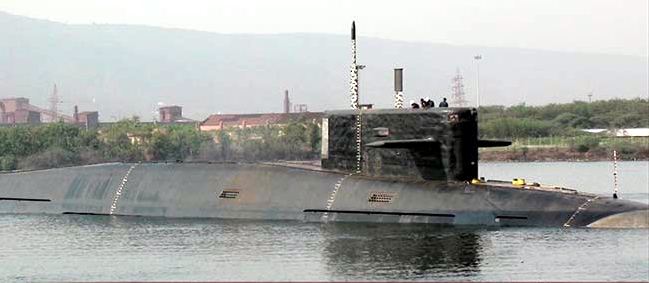Sourced : The Diplomat
By Ankit Panda
Sartaj Aziz, adviser to Pakistan’s prime minister on foreign affairs, presented an interesting proposal to the Pakistani Senate on Thursday. He said that he would consider having Pakistan introduce a resolution at the United Nations that would urge the body to declare the Indian Ocean a “nuclear free zone.”
Leaving aside the fact that the United Nations isn’t in the business of declaring nuclear weapon free zones, Aziz’s comments reflect increasing anxieties in Pakistan about India’s burgeoning sea-based nuclear deterrent.
With the first of Arihant-class of domestically designed ballistic missile submarines rolling out and testing underway of Delhi’s K-4 submarine-launched ballistic missiles ongoing, Delhi is coming closer to operationalizing its sea-based deterrent. (The K-4 has been test launched from the Arihant‘s on-board silos, as I discussed last month.)
Aziz is well aware of these developments. ”Apart from this air defence system, India has also recently conducted tests of nuclear capable, submarine based K4 ballistic missiles. Simultaneously large nuclear powered submarines are being built to carry these nuclear armed missile as a part of its second strike nuclear capability,” he told the Senate, according to a report in Dawn.
Unfortunately, for Pakistan, the United Nations won’t be able to solve this problem anytime soon. Moreover, India won’t be the only country looking to operate nuclear-armed ballistic missile submarines (SSBNs) in the waters of the Indian Ocean. China started operating Song- and Shang-class submarines in the Indian Ocean in 2014, according to the U.S. Department of Defense. Ostensibly, Beijing’s upcoming first overseas military facility—in Djibouti—will play a role in support submarine logistics.
According to the U.S. Defense Department’s most recent report on China’s military, four Chinese Jin-class SSBNs—China’s first sea-based deterrent as well—are operational. These submarines currently operate out off the People’s Liberation Army-Navy’s submarine base at Hainan Island, in the South China Sea, but Beijing may look to have its SSBNs patrolling the Indian Ocean soon enough.
As Bonnie Glaser and Matthew Funaiole highlight in a recent post, China’s Jin-class SSBNs, while giving Beijing its first credible sea-based second strike ability, are far from perfect. (Admittedly, neither is the Arihant.) In particular, the Jin-class, according to the U.S. Office of Naval Intelligence, has been found to be noisier than some 1970s-era Soviet SSBNs.
Given that China’s chosen to arm these with the relatively range-constrained JL-2 SLBM (with a 7,500 km range), the SSBNs would have to “travel undetected through several crucial chokepoints into the Pacific Ocean in order to strike the continental United States,” write Glaser and Funaiole. (India’s K-4 is more constrained by range yet, featuring an operational range of 3,500 km.)
The Pacific route might not be the best way for China to put its JL-2 within striking range of U.S. targets. The far reaches of the Indian Ocean, into the Gulf of Aden, offer another appealing region for Chinese SSBN patrols. The JL-2′s range just about brings the United States’ eastern coast into range. With the potential for submarine logistics support at Djibouti and perhaps even Gwadar in the Pakistan down the line, the Indian Navy might not be the only one in the region looking at the Indian Ocean for its SSBNs.
Unsurprisingly, amid increased Chinese sub-surface activity in the Indian Ocean, we’ve seen the United States and India deepen their anti-submarine warfare cooperation. Moreover, Delhi has started extending its maritime patrol and surveillance capabilities further southward; it sent a P-8I Neptune aircraft to the Seychelles earlier this year.
With India’s Arihant-class on the verge of commissioning and Chinese SSBNs possibly on the way to supplement the PLAN’s existing hunter-killer and nuclear attack submarines, the Indian Ocean won’t become a “nuclear free zone” anytime soon. Islamabad could look to build up its own undersea nuclear capabilities, but, as I’ve discussed before, that’ll be limited by a range of factors.

